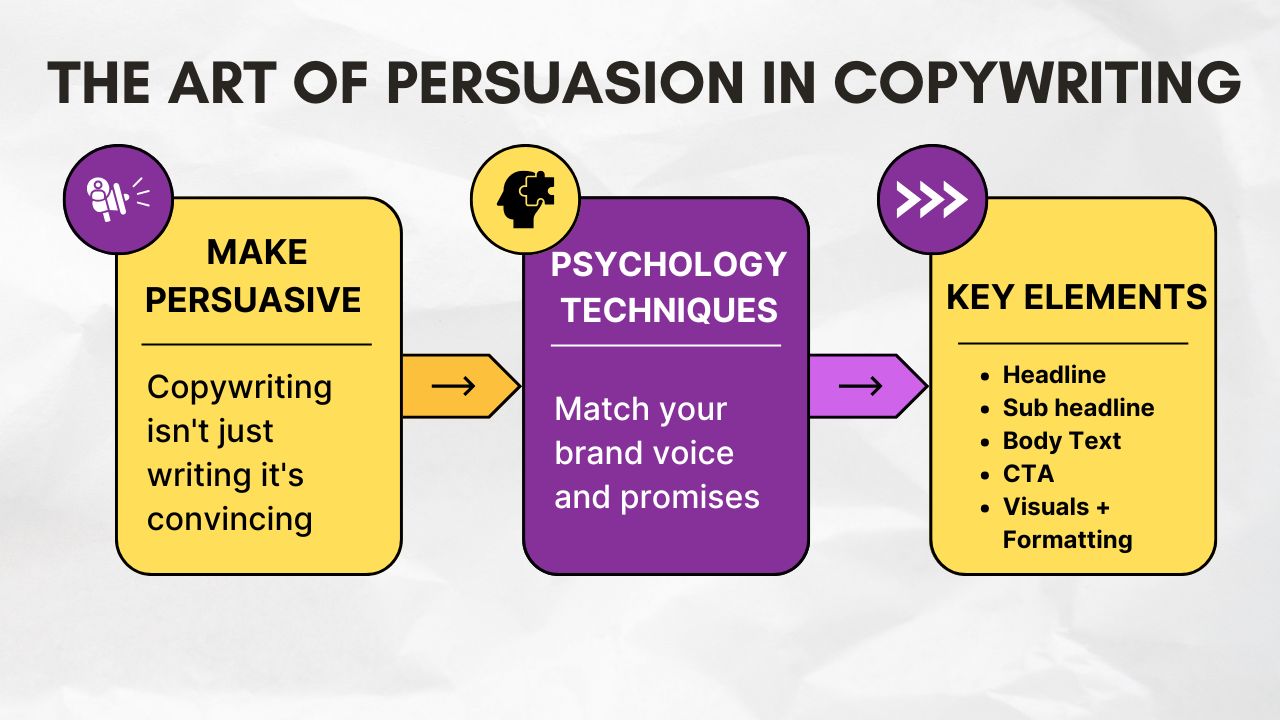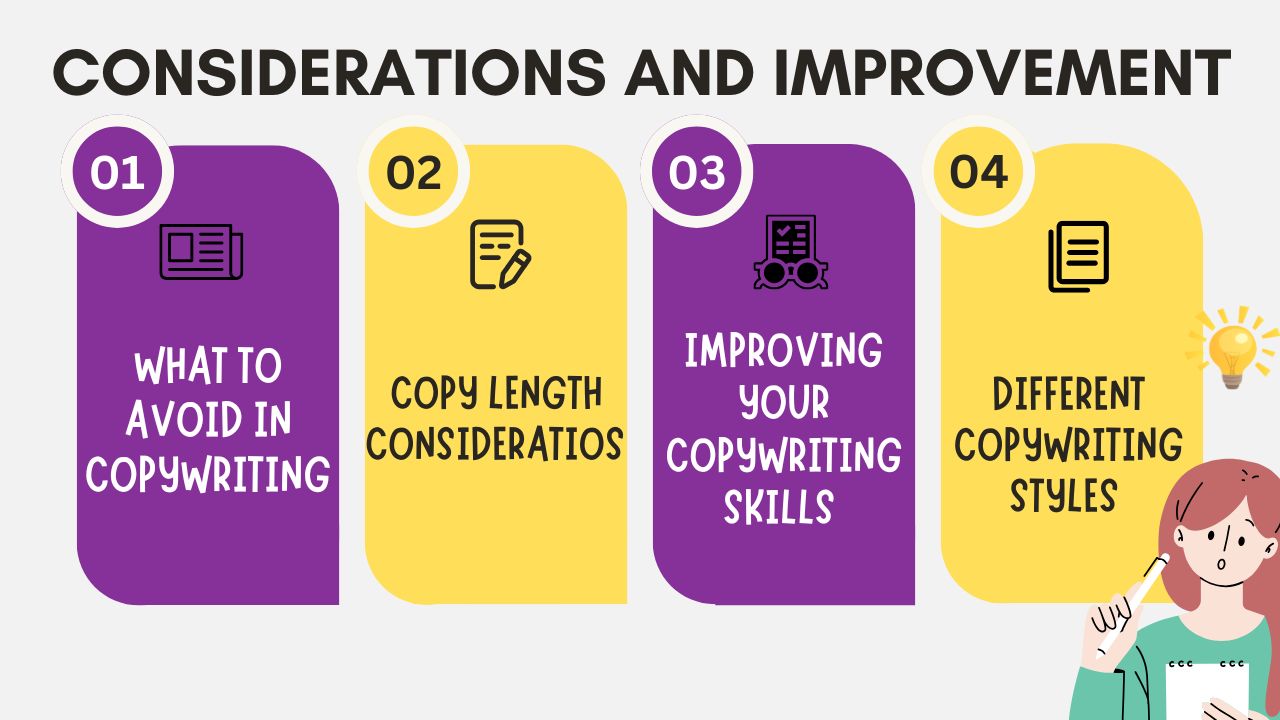What is Copywriting & How to Do It Right
Table of Contents
ToggleWriting that sells isn’t magic – it’s strategy. From headlines to taglines, copywriting shapes brand voice and drives action. Let’s explore how it works.
Table of Contents
ToggleFoundations of Effective Copywriting
Before writing anything, it’s key to understand what copywriting really is. This section breaks down the basics – from knowing your audience to crafting messages that grab attention and highlight what makes your offer stand out.
Understanding What is Copywriting
Ever read a short sentence that made you stop, smile, or click “Buy Now”?
That’s the power of copywriting. It isn’t just writing; it’s writing with a goal.
So, what is copywriting exactly?
It’s the act of using words to drive action. It could be a product purchase, a newsletter sign-up, or simply getting someone to stay on your website.
People often confuse it with regular content writing. But copy writing focuses more on persuasion and conversions than on storytelling or education.
If you’re just starting, don’t overthink it. Copywriting for beginners is less about fancy words and more about clear thinking and knowing who you’re talking to.
Knowing Your Audience in Copywriting
A great copy doesn’t shout into the void it speaks directly to someone. Before writing anything, ask: “Who is this for?”
Imagine selling coffee to office workers versus students. Your tone, style, and benefits will change completely, right?
That’s audience-first thinking.
Whether you’re doing copywriting for companies or startups, understanding your audience helps you connect emotionally. And an emotional connection builds trust.
In copywriting for marketing, your job is to translate customer needs into words that resonate. It’s like writing a message your ideal buyer has been waiting to hear.
Identifying Benefits and Unique Selling Points
Next comes what you’re offering and why it matters. Most products have features, but copywriting highlights the benefits of those features.
A benefit answers, “What’s in it for me?”
If you’re selling a phone, the feature might be battery life.
The benefit? “No more carrying a charger everywhere.”
For example, Apple doesn’t just sell phones it sells simplicity and innovation.
Instead of listing technical specs, their copy highlights how the device improves your life: “The future of health is on your wrist.”
In copywriting in advertising, showcasing your unique selling point is crucial.
Why should someone choose you over your competitor? Your copy should answer that instantly.
Even if you’re new to this, start by writing down what makes your product different then build your message around it.
Getting Relevant Attention
Now that you know who you’re talking to and what you’re offering, the next step is getting noticed. Because without attention, even a great copy falls flat.
Start with a strong hook. Ask a question. Use a bold statement. Grab attention in the first line. That’s your doorway to keeping readers engaged.
In copywriting for companies, this can mean a clever tagline or a scroll-stopping headline. For copywriting for marketing, it could be a relatable pain point.
The goal is to earn attention that matters – from the people who actually care about what you’re saying or selling.
Crafting Compelling Copy
Once you’ve nailed the basics, it’s time to level up. This section dives into how to craft compelling copy—focusing on headlines, tone, structure, and the many styles used across websites, ads, and social media.
Start with Headlines and Taglines That Hook
Your headline is your first impression; make it count. A strong hook can stop the scroll or spark curiosity instantly.
One simple copywriting tip?
Keep headlines short, emotional, or benefit-driven.
“Get glowing skin in 5 days” beats “Our New Skincare Formula.”
In copywriting for advertising, a good tagline becomes part of your brand.
Take Nike’s tagline: “Just Do It.” It’s short, short, punchy, and unforgettable.


Another great headline?
Mailchimp’s homepage line: “Turn emails into revenue.” It’s clear, results-driven, and tailored to business owners.
Want to craft compelling copy?
Start with bold headlines that speak to a need or desire. That’s how you get attention in a noisy world.
Choose a Style and Tone That Fits
Every brand sounds different. Some are playful, others professional. The secret is knowing what tone your audience relates to best.
Copywriting styles vary—from conversational to technical, humorous to urgent. What works for a fitness brand won’t work for a law firm.
Copywriting for a website often feels clear, clean, and informative.
But copywriting for social media? That’s more relaxed, like texting a friend.
An example of clever social copy: Wendy’s tweet, “Our beef is never frozen. Unlike our tweets.” It’s playful, brand-aligned, and memorable.
One size doesn’t fit all. Match your voice to your audience, and your message will feel natural, not forced.
Structure Your Copy for Readability
Nobody likes giant walls of text. Clean structure makes your copy easy to read and easy to act on.
Use short paragraphs, bullet points, and headers to guide the eye. One idea per paragraph is a solid rule of thumb.
In copywriting for advertising, layout matters just as much as the words. You’ve got seconds to get your message across—make every line earn its place.
And here’s a golden tip: always write with mobile users in mind. Most people read on their phones now. Keep it snackable.


Creating Effective Copy
Once you’ve nailed your tone, structure, and hook—it’s time to put it all together. This is where the real magic happens.
Focus on the elements of copywriting: clarity, relevance, emotion, and a clear call-to-action. That CTA is your final push so make it strong.
Experiment with different types of copy like sales pages, email subject lines, or Instagram captions. Each format teaches you something new.
Want to improve fast?
Follow brands you admire. Study their copywriting tips, styles, and wording. Mimic what works then make it yours.
The Art of Persuasion
Great copy doesn’t just inform; it persuades. In this section, we’ll explore powerful copywriting techniques, psychology tricks, and real examples that show how persuasive copy turns casual readers into loyal customers.
Make Persuasive Copywriting
Want your words to actually convince someone?
Then persuasive copy is your best friend. It’s more than facts, it’s about feelings, too.
Persuasive copywriting taps into emotions, needs, and desires. It helps the reader feel understood. When people feel seen, they’re more likely to trust your offer.
Think about the best copywriting examples you’ve come across. They didn’t just inform you they moved you. That’s the secret sauce behind high-converting content.


Apply Psychology Techniques in Copywriting
Here’s a fun trick: people are wired to respond to certain words. Words like “you,” “now,” and “free” trigger curiosity and urgency.
Amazon uses urgency in their copy with lines like “Only 3 left in stock—order soon.” It triggers fear of missing out (FOMO), nudging users to act fast.
Copywriting techniques like social proof, scarcity, and storytelling keep people reading.
Ever bought something because “only 2 left in stock”?
That’s persuasion at work.
In copywriting in advertising, brands often use repetition and rhythm to create memorable lines. That’s why slogans stick with you for years.
Good copy leans into psychology. It doesn’t manipulate; it connects with how people already think and feel.
Key Copywriting Elements
Not all copies are created equal.
Good copy is simple, clear, and specific. It guides people without being pushy.
Avoid fluff. Avoid jargon. Say what you mean and say it in a way your reader instantly gets.
The best copywriting knows when to sell and when to solve a problem.
If your words make someone nod and say, “That’s exactly what I need,” you’re doing it right.
Persuasive copy isn’t loud or clever, it’s helpful. And helpful copy builds trust, one sentence at a time.
Considerations and Improvement
Even seasoned writers slip up. This section covers common copywriting mistakes, how to avoid bad copy, and ways to sharpen your copy writing skills through real examples, feedback, and experimenting with different styles and formats.
What to Avoid in Copywriting
Even the best copywriters make mistakes. But catching them early is key to writing better content.
Copywriting mistakes often happen when writers forget who they’re talking to. If you’re not addressing your audience’s needs or using their language, you’re missing the mark.
Another mistake?
Bad copy: “Our software offers solutions for enterprise workflow enhancement.”
Good copy: “Save hours every week with tools that keep your team on track.”
Overloading copy with too many features. Readers don’t care about everything. They care about how your product solves their problem.
Avoid long, confusing sentences. Simple is better. Clarity always wins over cleverness.
Copy Length Considerations
Ever seen a sales page that felt like it would never end?
That’s bad copy writing. If your message is strong, you shouldn’t need endless paragraphs.
In most cases, good copy is brief but effective. A few clear sentences with a strong CTA work better than paragraphs of text no one has time to read.
If you’re writing a copy for a website, remember that visitors tend to skim. Make every word count. Edit down to what’s essential.


Improving Your Copywriting Skills
The best way to improve your copywriting skills?
Practice, practice, practice. Start by writing daily, whether it’s product descriptions or social media posts.
Look at copywriting examples from top brands. Don’t copy them word-for-word, but pay attention to structure, tone, and style. Then, experiment with your own twist.
To improve, try rewriting existing copies from brands you follow.
For instance, take a complex product description and make it simpler and more engaging like turning “High-resolution AMOLED display” into “Crisp visuals that pop, even in sunlight.”
Want to start copywriting professionally?
Get feedback from others. Critique your own work. The more you refine your writing, the better you’ll get.
Different Copywriting Styles
Not all copies fit into a neat box. Explore different copywriting styles like conversational, emotional, or direct and see what resonates with you.
Experiment with humor, urgency, or empathy. You’ll find your sweet spot, and that’s where your best copy will come from.
Remember, there’s no one right way to write good copy. Your style will evolve as you learn.
Your Words Can Make the Brand
If you’ve made it this far, you now have the foundation for writing effective copy. From knowing your audience to crafting compelling headlines, copywriting is an art that every brand can master.
Whether you’re creating copywriting for companies or personal projects, remember that every word has the power to influence. The key is to stay clear, focused, and authentic.
In the end, the best copywriting isn’t about using big words or complicated sentences. It’s about knowing your audience, offering value, and making sure your copy resonates. Use the copywriting tips you’ve learned here, and you’ll start seeing results.
The more you practice and study, the better you’ll get. And soon, you’ll find yourself writing copy that doesn’t just talk but converts.
